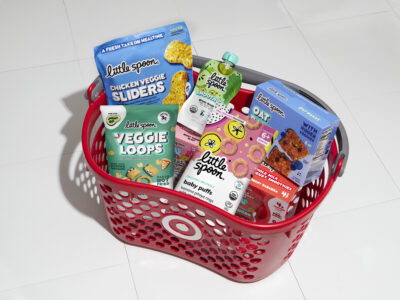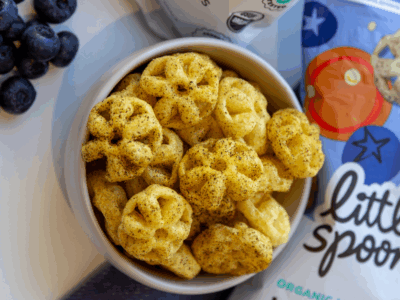When it comes to food trends, we try to stay hip to what’s cool. Dalgona coffee? All over it. Emily Mariko’s salmon rice? Lunch every day for a solid three weeks. Folded tortilla sandwiches? We’re on it. There’s basically not a fun food trend we won’t try, mainly to say that we tried it.
But there’s a big difference between a fun and temporary food trend, and one that could be potentially detrimental to your (and your family’s) overall health. When it comes to what we feed ourselves and our families, health is key. Which is why there are a few food trends we don’t subscribe to.
Low-fat foods
Say it with us now: fat is friend, not foe. Diet culture in the last 40 years or so has conditioned many of us to believe that any fat, or foods that are high in fat, are automatically bad for us and should be avoided. Instead, we were not-so-gently encouraged to eat low-fat, or worse, fat-free foods. Couple of issues with this…beyond it being a deeply problematic part of diet culture!
First off, healthy fats are good for you in moderation. Healthy fat intake is beneficial to our bodies: it’s a source of essential fatty acids, it helps with vitamin absorption, it protects our organs + cell membranes, and it’s an excellent source of energy. Secondly, when manufacturers remove fat from foods, they typically replace it with other, less beneficial ingredients like sugar, artificial flavoring, and a whole lot of sodium. Because spoiler alert! Healthy fat is not only good for us, but it’s also where a lot of the natural flavor in foods comes from.
Gluten-free food when you don’t have a gluten allergy
We want to make one thing clear right off the bat: we’re not talking about people with celiac or actual gluten allergies and sensitivities. Somewhere along the way, gluten-free became this obsessive health kick (and yes, it became part of diet culture). We’re not sure if there’s an assumption that gluten-free = low-carb or healthy, but suddenly everyone and their mama was avoiding gluten like the plague. Gluten is not a bad guy, folks! Gluten-free is also not necessarily a healthier alternative. In fact, gluten-free foods often have just as much sodium, fat + sugar as traditional foods, and many of the vital vitamins and nutrients are stripped away during processing. Let’s leave the gluten-free foods to those who actually need them, i.e. those whose lives depend on it.
Juice cleanses
This one…should be pretty obvious? We know it’s misleading since these ‘cleanses’ are chockfull of healthy fruit and veg. That’s good, right? Well…not exactly. Fruit and veggies ARE healthy, yes. But part of what makes them healthy is the fiber you get when you eat them. EAT being the operable word there. Reducing fruit and veggies down to juice often strips them of their nutritional benefits, and concentrates the sugar that occurs naturally in them. Plus, you shouldn’t replace any meal or whole food with juice. Like, EVER. You need food to sustain your body and its systems. Fruit and veg juice in moderation? Absolutely, totally fine. Maybe a glass with your breakfast or lunch. Or even better, just eat the damn fruit and veg instead.
Agave sweetener/nectar
Sugar, like fat and gluten, has gotten a really bad rap over the years. Parents especially worry about this one, as we’ve been made to believe that giving our kids too much sugar (or any sugar at all, really) is the most unhealthy thing we can do. Fructose, refined sugars, plain sugar—if you look closely at nutritionals on a lot of foods, the exclusion of these ingredients is often highlighted as a selling point. And we get it—sugar is absolutely something that we should keep an eye on and consume in moderation, and natural sugars are a great alternative. Or are they?
Agave sweetener and syrup has emerged as a much healthier alternative to plain sugar or even other natural sweeteners like stevia or xylitol. So it may come as a shock to find out that not only is agave NOT a healthier alternative to plain sugar, it’s actually probably one of the least healthy sugar alternatives you can use. Agave is very low in glucose and on the glycemic index when compared to regular sugar. However, that’s because agave contains much higher levels of fructose—nearly 85%, in fact. That is significantly higher than regular sugar and even high fructose corn syrup (now that’s a ‘diet danger’ buzzword, isn’t it?), which are about 50/50 glucose and fructose. Eating too much fructose can negatively impact overall health and contribute to insulin resistance, heart disease, and liver disease. So while we’re all about moderation and eating healthier, it’s probably a good idea to think twice before replacing sugar with agave and making it your go-to sweetener of choice.
We know it’s not easy to parse out what’s healthy and what’s a fad when it comes to food. Especially when you’re feeding a family—we all want our kids to be the healthiest versions of themselves, and most of the time, that starts at our own dinner table. But before you subscribe to the newest ‘healthy’ food trend, take a beat and read beyond the headlines and food labels. You may be surprised by what you discover.



